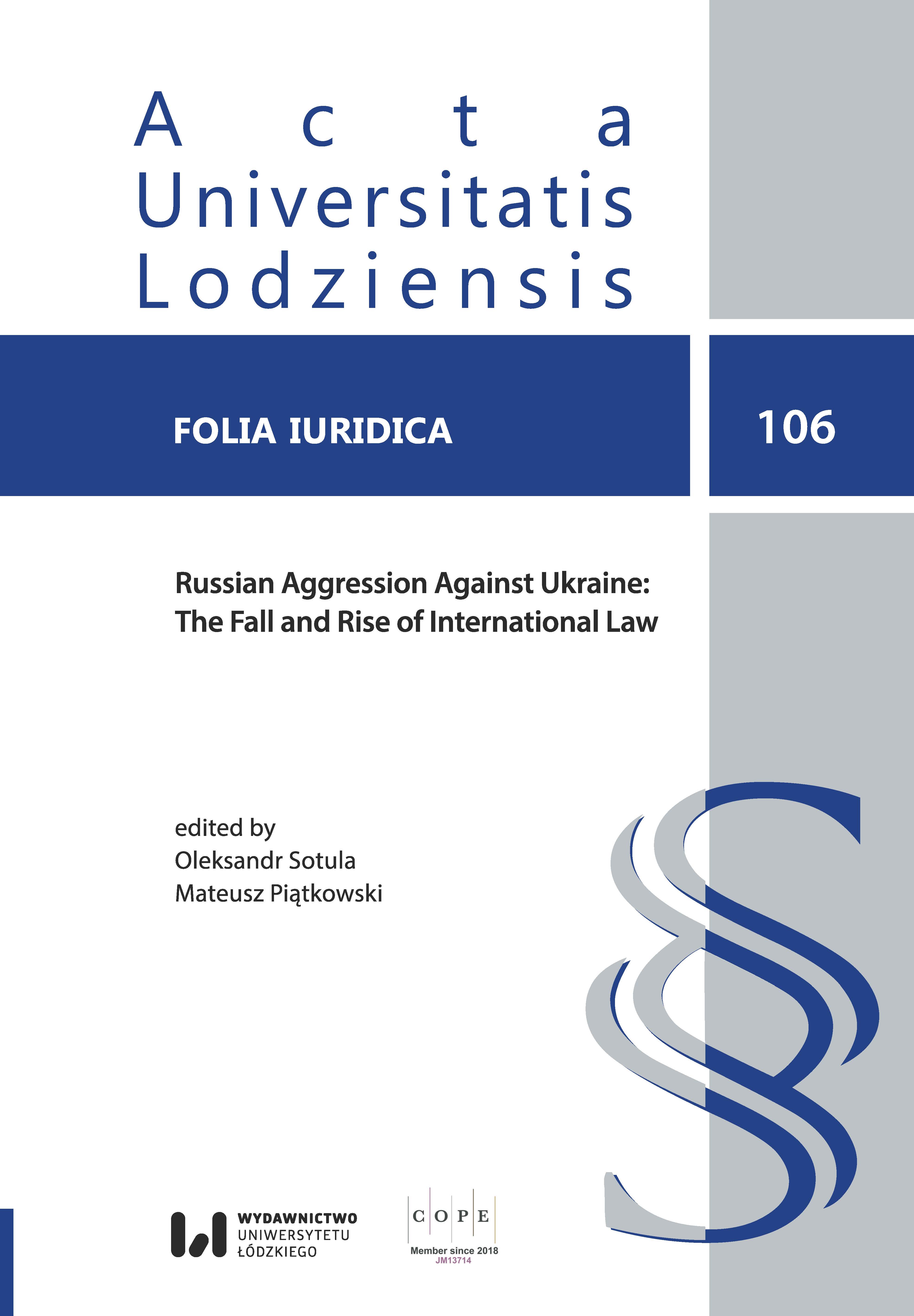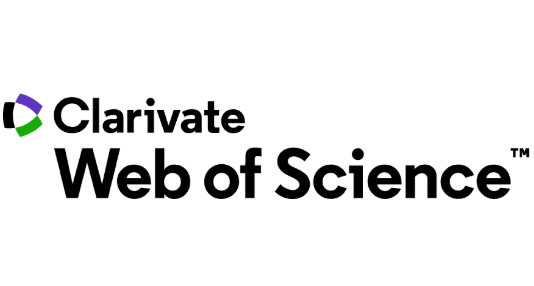Starlink’s Provision of Telecommunication Services During the Time of Armed Conflict and Its Consequences from the Perspective of Public International Law
DOI:
https://doi.org/10.18778/0208-6069.106.11Keywords:
international space law, Elon Musk, Starlink, Ukraine, USAAbstract
This article attempts to provide an overview of the most important international regulations relating to the provision of telecommunication services by private companies to one or more belligerent parties in times of an armed conflict. Taking as an example the recently widely commented issue of Starlink allegedly withholding its services otherwise provided to the Ukrainian Armed Forces, this article reviews the issue from the perspective of general public international law as well as international space law. Specifically, the customs and regulations concerning the attributability of private parties actions as well as peaceful utilisation of outer space are scrutinised.
Downloads
References
Brown, Tara. 2022. “Ukraine Symposium – The risk of commercial actors in outer space drawing states into armed conflict”. Lieber Institute West Point Articles of war, July 8, 2022. https://lieber.westpoint.edu/commercial-actors-outer-space-armed-conflict/
Google Scholar
Farley, Robert. 2020. “Space Force: Ahead of Its Time, or Dreadfully Premature?” CATO Institute, December 1, 2020. https://www.cato.org/policy-analysis/space-force-ahead-its-time-or-dreadfully-premature
Google Scholar
Finch, Edward R. Jr. 1968. “Outer Space for ‘Peaceful Purposes.’” American Bar Association Journal 54(4): 365–367.
Google Scholar
Goines, Timothy. 2022. “The Russia – Ukraine war and the space domain.” Lieber Institute West Point Articles of war, March 14, 2022. https://lieber.westpoint.edu/russia-ukraine-war-space-domain/
Google Scholar
ICEYE. 2023. “CEYE Signs Contract to Provide Government of Ukraine with Access to Its SAR Satellite Constellation.” https://www.iceye.com/press/press-releases/iceye-signs-contract-to-provide-government-of-ukraine-with-access-to-its-sar-satellite-constellation (accessed: 7.11.2023).
Google Scholar
International Court of Justice. 1980. “United States Diplomatic and Consular Staff in Tehran (United States of America v. Iran)”. Hague.
Google Scholar
International Court of Justice. 1986. “Military and Paramilitary Activities in and against Nicaragua (Nicaragua v. United States of America)”. Hague.
Google Scholar
International Law Commission. 2001a. “Responsibility of States for Internationally Wrongful Acts.” Yearbook of the International Law Commission. Vol. II, https://legal.un.org/ilc/texts/instruments/english/draft_articles/9_6_2001.pdf
Google Scholar
International Law Commission. 2001b. “Draft articles on Responsibility of States for Internationally Wrongful Acts, with commentaries.” Yearbook of the International Law Commission. Vol. II, https://legal.un.org/ilc/texts/instruments/english/draft_articles/9_6_2001.pdf
Google Scholar
Iran-U.S. Claims Tribunal. 1987. “Kenneth P. Yeager v. The Islamic Republic of Iran.” Award No. 324-10199-1, November 2, 1987.
Google Scholar
Jakhu, Ram. 2006. “Legal Issues Relating to the Global Public Interest in Outer Space”. Journal of Space Law 32(1): 31–110.
Google Scholar
League of Nations. 1923. “Official Journal, 4th Year, No. 11”. November 1923. Hague.
Google Scholar
Lyall, Francis. Paul Larsen. 2009. “Space Law: A treatise.” Burlington: Ashgate Publishing Company.
Google Scholar
Morgan, Richard. 1994. “Military Use of Commercial Communication Satellites: A New Look at the Outer Space Treaty and Peaceful Purposes”. Journal of Air Law and Commerce 60(1): 237–327.
Google Scholar
Musk, Elon (@elonmusk). 2023. “There was an emergency request from government authorities to activate Starlink all the way to Sevastopol.” Tweet, September 8, 2023. https://twitter.com/elonmusk/status/1699917639043404146?s=46&t=bZcrLpl8DTxSpYLBntBfhQ
Google Scholar
Noorden, Wolf D. von. 1995. “Inmarsat Use by Armed Forces: A Question of Treaty Interpretation”. Journal of Space Law 23(1): 1–18.
Google Scholar
Satariano, Adam. 2023. “Elon Musk doesn’t want his satellites to run Ukraine’s drones.” The New York Times, February 9, 2023. https://www.nytimes.com/2023/02/09/world/europe/elon-musk-spacex-starlink-satellite-ukraine.html
Google Scholar
Sheetz, Michael. 2022. “Elon Musk’s SpaceX sent thousands of Starlink satellite internet dishes to Ukraine, company’s president says.” CNBC, November 5, 2023. https://www.cnbc.com/2022/03/22/elon-musk-spacex-thousands-of-starlink-satellite-dishes-sent-to-ukraine.html
Google Scholar
Trump, Donald. 2018. “Text of a Memorandum from the President to the Secretary of Defense Regarding the Establishment of the United States Space Command.” White House, December 18, 2018. https://csps.aerospace.org/sites/default/files/2021-08/US%20Space%20Command%20memo%2018Dec18.pdf
Google Scholar
United Nations. 1951. “Reports Of International Arbitral Awards.” Vol. IV. New York.
Google Scholar
United Nations. 1967. “Treaty on Principles Governing the Activities of States in the Exploration and Use of Outer Space, including the Moon and Other Celestial Bodies.” United Nations Treaty Collection, registration number 8843.
Google Scholar
United Nations. 1968. “Agreement on the Rescue of Astronauts, the Return of Astronauts and the Return of Objects Launched into Outer Space.” United Nations Treaty Collection, registration number 9574.
Google Scholar
United Nations. 1972. “Convention on International Liability for Damage Caused by Space Objects.” United Nations Treaty Collection, registration number 13810.
Google Scholar
United Nations. 1976. “Convention on Registration of Objects Launched Into Outer Space.” United Nations Treaty Collection, registration number 15020.
Google Scholar
Published
Versions
- 2024-06-18 (2)
- 2024-03-30 (1)
How to Cite
Issue
Section
License

This work is licensed under a Creative Commons Attribution-NonCommercial-NoDerivatives 4.0 International License.














